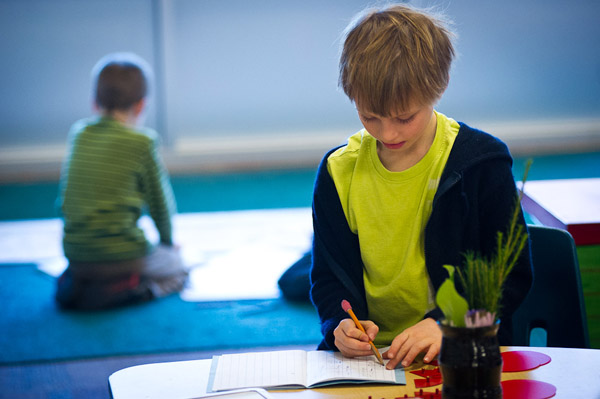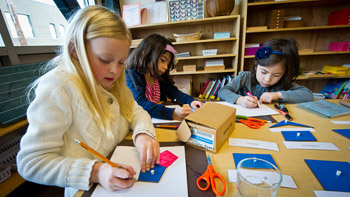
October 30, 022
I was recently invited to present leadership training to a group of private and parochial school principals. I attempted to get them beyond an intellectual understanding of a different way of educating children and coaching teachers, to a more experiential one. I wanted to open their minds to the possibility that their jobs were more about inspiring teachers than managing them. I further hoped that they might try to open the minds of their teachers to the possibility that their jobs were also more about inspiring students than managing them, as well. I set out to give them a short but inspiring educational experience, and what could be better than a Montessori lesson?
I asked this group of well-educated professionals what they remembered from their own education about pi. Someone responded, “3.14159.” “You’re right,” I said, “that is the value of pi, but does anyone remember what pi means?” At once they seemed to adopt the sheepish demeanor of students in a traditional math class, each of whom is saying to him or herself: “I should know this but am afraid to answer because I might get it wrong. I hope the teacher doesn’t call on me!” To relieve their discomfort, I supplied the answer: “It is the ratio of the circumference of a circle to its diameter.”
I invited them to gather around me. On the table, I had a sheet of plain white paper, a pencil, a ruler, and a circle. I proceeded to draw a straight line almost the length of the piece of paper with the pencil and ruler. Next, I made a mark at one point of the circle’s circumference. Holding the circle vertically, I matched that mark with the beginning of the line on the piece of paper, and carefully rolled the circle along the line. I asked the principals to let me know when the mark had made one revolution and returned to touch the paper, which they did. I made a mark at that point on the line also. “Do you agree with me that the distance between the beginning of the line and this mark measures the circumference of this circle?” They agreed that it did.

Now I compared the diameter to the circumference. I laid the circle flat down on the paper, its edge even with the beginning of the circumference line, and made a mark at its other edge, thus denoting the width of the circle, its diameter. I moved the circle along the line to this new mark and again marked the diameter. Then, a third time. This only left a tiny bit of the circumference line. “So, we just found that we could measure the diameter of our circle along the circumference line – how many times? 1, 2, 3, and a little bit. We have just proved pi, haven’t we?”
I invited each of the principals to take their own piece of paper, ruler, pencil, and circle, and prove pi for themselves. They raced back to their tables and did so. Then I asked, “How do you feel?” “Excited,” said one. “I feel like I have just accomplished something!” offered another. “I’ll never forget pi now!” said a third. “Can we do it again?” asked yet another.
I suggested to the principals that what they had just experienced was a small example of the kind of education that would lead their students to fulfill the skills and characteristics necessary for the 21st Century. I further suggested that they take this activity back to school with them and share it with their teachers at the next staff meeting. It’s not their job necessarily to discover all of the better ways to teach Geometry, English, or Botany; but perhaps it is their job to inspire and empower their teachers by this example to discover better methods of teaching for themselves.
Any Montessori elementary teacher (or student) will recognize this lesson on the pi. I have watched Montessori teachers give this lesson any number of times. I remember the look of excitement and discovery on the faces of the children. I can also recall teachers giving this lesson to the student’s parents at an evening event at the school. Parents invariably respond with the same delight as their children. “Oh, so that’s what pi means! It makes so much sense. It’s so simple and elegant. Why didn’t I learn this way?”
Sadly, we can’t take parents back to childhood to re-do their education. But, isn’t it nice to know that children are receiving these kinds of experiences every day and in all areas of the Montessori classroom? When done in this way, school is not only more enjoyable but empowering and inspiring, and the learning stays with them for the rest of their lives. And it’s easy as pi.